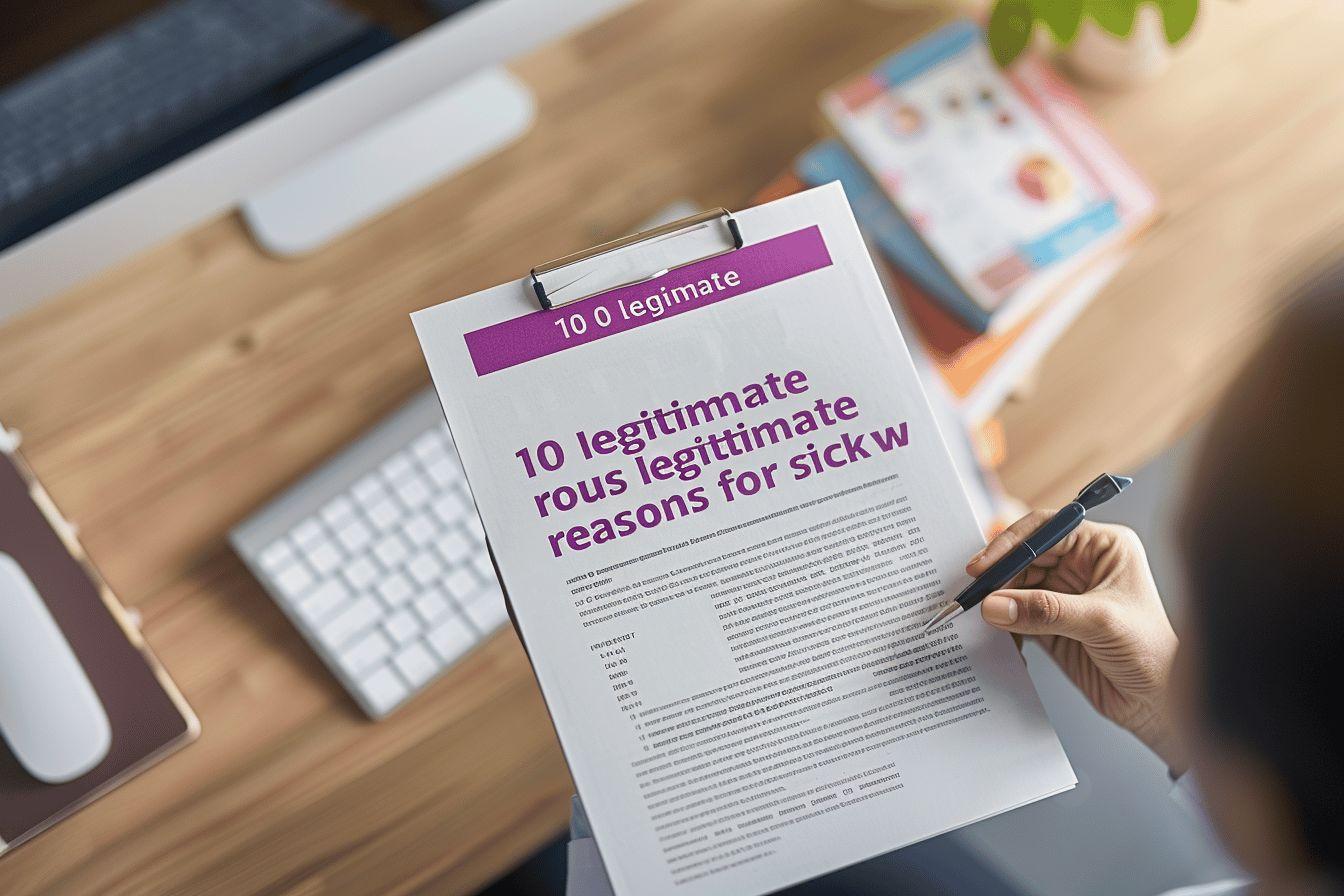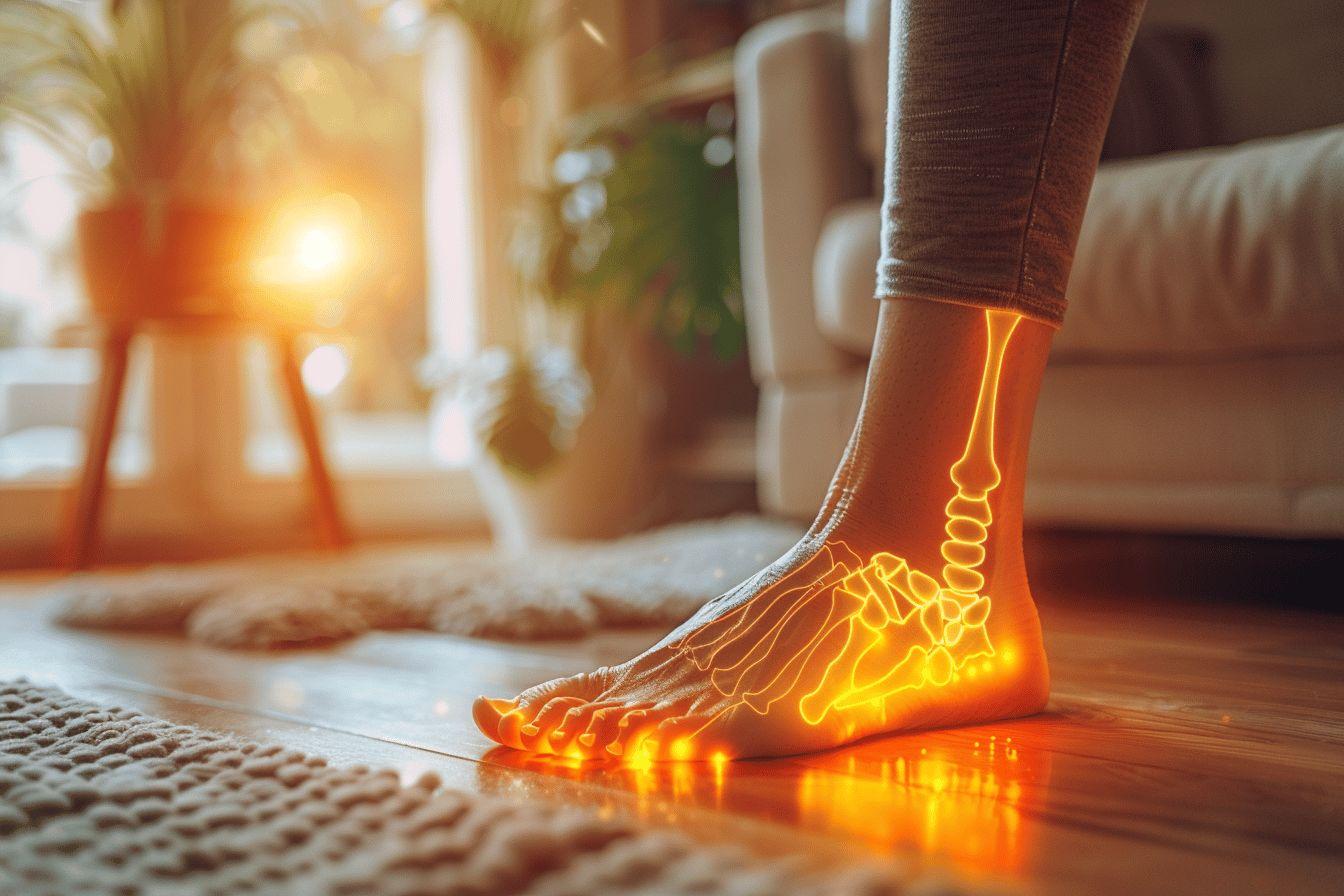Brief about the article
Sick leave meets specific medical criteria and must comply with a legal framework to be justified.
- Legitimate medical reasons: seasonal illnesses, musculoskeletal disorders, psychological problems (burnout, depression), and post-surgical procedures
- The duration varies considerably depending on the condition, ranging from a few days for the flu to several months for burnout
- Physically demanding jobs often justify longer sick leave, particularly for foot problems such as plantar fasciitis
- The doctor assesses the need for sick leave based on the severity of the symptoms and the nature of the condition. the job held
Faced with the uncertainties of professional life, employees may be faced with various situations requiring a temporary break. Understanding the legitimate reasons for sick leave allows you to know your rights and protect your health. Let's examine together the valid reasons why a doctor can prescribe sick leave and how to effectively manage this delicate period.
The main medical reasons for sick leave
Illness is the leading reason for sick leave in France. Whether it's a seasonal illness like the flu or a more serious condition, the attending physician assesses the need for rest based on the patient's health and the nature of their job.
Musculoskeletal disorders are a common cause of sick leave. Among these, foot problems such as plantar fasciitis may warrant a work stoppage, particularly for jobs requiring prolonged standing.
Psychological disorders are also a valid reason. Burnout, depression, or severe anxiety often require a period of rest to allow for mental recovery. In 2023, Social Security recorded a 15% increase in sick leave related to these conditions.
Accidents, whether domestic or recreational, can temporarily prevent you from working. A fracture, sprain, or concussion are classic examples of incidents requiring healing time.
Some elective surgeries also warrant time off. The duration varies considerably depending on the nature of the operation, ranging from a few days for a minor procedure to several months for major operations.

| Type of Medical Condition | Average Length of Leave | Compensation Rate |
|---|---|---|
| Seasonal Illness (flu, gastroenteritis) | 3 to 7 days | 50% of daily wage |
| Musculoskeletal disorders | 10 to 45 days | 50% to 66.66% depending on the agreement |
| Psychological disorders | 14 to 60 days | 50% to 66.66% depending on the agreement |
| Surgical intervention | Varies depending on severity | 50% to 100% depending on the agreement |
Specific situations giving entitlement to sick leave work
Beyond common illnesses, certain specific situations entitle you to leave. Pregnancy-related health problems may require early rest before official maternity leave.
Specific foot conditions, such as talalgia, may justify temporary leave, particularly for jobs requiring long periods of standing or intensive walking.
Workplace burnout has been a recognized reason for several years. The doctor then assesses the situation based on the patient's physical and psychological symptoms.
Work-related accidents and occupational illnesses benefit from a special system that is more advantageous for employees. The compensation rate is higher and the conditions for obtaining it are easier since the employer's liability is involved. For chronic conditions such as diabetes or heart disease, occasional sick leave may be necessary in the event of decompensation or temporary worsening. Here are the criteria doctors consider when determining the need for sick leave:
- Severity of symptoms and impact on functional abilities
- Nature of the job held and physical or mental demands
- Risk of contamination for colleagues (infectious diseases)
- Potential side effects of prescribed treatments
- Age and general health of the patient
Usual durations according to conditions
The durations The length of time off work varies considerably depending on the condition. For certain specific conditions, such as heel spurs, the length of time off work required depends on the severity of the condition and the type of job held.
Seasonal respiratory infections generally require short-term sick leave of 3 to 7 days to prevent contagion and ensure adequate recovery.
For lower back pain and sciatica, the length of time varies between 1 and 4 weeks, depending on the intensity of the pain and the type of job held. Physically demanding jobs often require longer periods of downtime to allow for complete recovery. Scheduled surgeries are accompanied by downtime, the duration of which is generally predictable. An appendectomy usually requires 2 to 3 weeks, while a hip replacement can take 2 to 3 months. In the case of mental health disorders, the duration is more variable and often progressive. An initial leave of absence may be 15 days, then extended depending on the progress and response to treatment.
- For a mild sprain: 1 to 2 weeks
- For a simple fracture: 4 to 8 weeks
- For moderate depression: 4 to 12 weeks
- For burnout: 2 to 6 months depending on severity
- For heart surgery: 2 to 4 months minimum
Rights and procedures for obtaining justified leave
To benefit from sick leave, a medical consultation is the essential step. Only a doctor can objectively assess your condition and prescribe rest if necessary.
The medical certificate must be sent to your employer and your health insurance fund within 48 hours. A delay may result in a reduction in daily benefits.
During the leave, certain obligations must be met: compliance with authorized hours of absence, prohibition from engaging in any other professional activity, and submission to any medical checks.
If an extension is necessary, a new medical consultation is required. The doctor will assess the progress of your condition and decide whether to extend the rest period.
If your condition permits, a return to therapeutic part-time work may be considered as a transition before returning to work in full. This option must be approved by the attending physician, the Social Security medical advisor, and the occupational physician.





Leave a comment
This site is protected by hCaptcha and the hCaptcha Privacy Policy and Terms of Service apply.